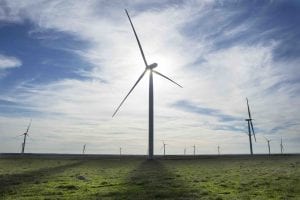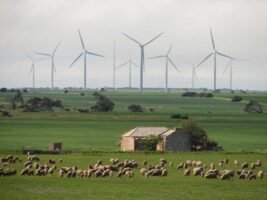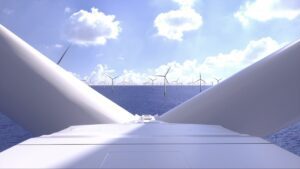People and ships are going to be in short supply when Australia’s budding offshore wind industry begins building, according to experts at the Wind Industry Summit in Melbourne this week.
The availability of vessels is a tangible problem that can be fixed, but skills shortages are a long term issue that can’t be solved by throwing money at it.
The looming shortage of workers to prepare and build offshore wind projects in Victoria is so concerning to developers that several, including Star of the South and Bluefloat Energy, are putting significant resources into working out how the existing skills in Gippsland’s coal and oil and gas industries can shift into wind.
“What we hear from the community is what are the jobs in offshore, how would I get a job in offshore wind and what kind of training would I need,” said Katrina Langdon, industry development and procurement manager for Star of the South.
The team behind the Star of the South project have been scouring Gippsland for potential workers, talking to the transition team at the Yallourn coal power plant and mine, which will close in 2028, as well as industries and chambers of commerce, and produced an offshore skills map, a map of all the vessels in the region that can support the project, and a supplier directory.
The map shows skills held by 70 per cent of the coal workers in the region and 60 per cent of oil and gas workers have a high or very high overlap with the needs of the budding industry.
Trades and support roles such as in finance are also a good fit, but specialist operators in specific pieces of equipment are not a good overlap.
Australia has the ships
All but the ships needed to install the huge towers are already available and used in Australia, says Oceanex infrastructure manager Jordan Glanville.
But this also means higher competition for those vessels, from global offshore wind developers, the offshore oil and gas industry for field development and for the rising number of decommissioning projects, and even Australia’s defence force today.
“One of the biggest challenges is we’re trying to do everything everywhere all at once, just like the rest of the world,” he said at the summit.
“We need clear signals to market and a pipeline of work.”
Global demand is expected to grow seven times between 2021 and 2030, and there are not many in the world yet. As of October last year, there were 48 vessels operating in the Europe offshore wind industry, 10 in Asia, 47 in china, and two in US. It takes about four years to build a ship, but some of these vessels are already booked out a decade in advance, says Allens partner Melissa Keane.
The first ship out was for the Star of the South project in 2019 to install floating lidar to monitor environmental conditions. But each project around Australia will require specialist ships to lay underwater cables, offshore construction vessels for mooring and cables, and the ships that can install towers.
Glanville says more than 10 different types of vessel are needed on a single project, each of which needs to be crewed by about 30 people. Construction vessels are looking at housing 50 extra workers.
While Australia has experience doing most of the jobs the offshore wind industry will require, in Western Australia’s gas fields, what the country hasn’t seen is multiple developments happening ay the same time. Developers will likely need to “share the toys”, Glanville says.
It’s suggested that up to 20 applications have been made for feasibility licences in Victoria, and when NSW opened its offshore Renewable Energy Zones (REZs) in December, they immediately attracted seven expressions of interest.
Locking in available vessels is a source of potential contract risk, as a shortage can throw out timelines and expose developers to legal risk, Keane says.
She says because of the global shortage of vessels to support the industry, securing these will be critical to convincing third parties, such as financiers, to get involved.
Prospective local content rules may impact on vessels as well: the UK, Taiwan and the US have local content conditions, with the latter requiring offshore wind ships to be built and flagged in the US and crewed by Americans — which is one reason why there is only two working in that industry.
Need more ports
Hidden behind the concerns about workers and ships, is the extent to which the states will need to reform the ports serving the industry,
WSP director James Perry says ports need to be intricately designed to enable the very expensive vessels to be constantly working, which means every part of the port needs to optimised for offshore.
“This is where our biggest capital outlay is because those vessels are so expensive on their day rates you can’t let them stop,” he says.
At the port of Hull, ships building the turbines were on a six-day cycle of pick up, install and return. Any problems on land would cause problems for that cycle.
Victoria has said its preferred port is Hastings, but Perry says the state needs more than one to lower the risk of delays in one part of the process rippling throughout the industry.










